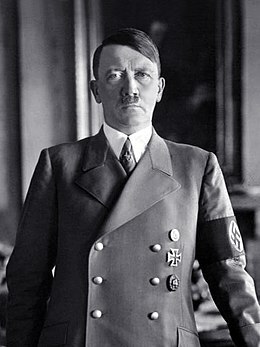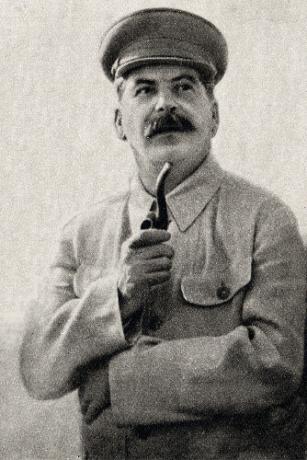THE tyranny is, historically, a type of government in which the leader comes to power or remains in power. illegitimate leadership. The first records of tyrannical governments date back to the archaic period of Ancient Greece (8th century BC Ç. the VI a. C.), so much so that the word tyranny originates from the Greek word týrannos, which means illegitimate leader.
Due to the abuse of power and cruelty practiced by many tyrant rulers throughout history, the term tyrant has undergone a resignification, becoming synonymous with an authoritarian and cruel ruler who abuses his power.
What was tyranny in Greek society
O archaic period of ancient greece saw the well-known city-states flourish (polis) Greek. The polis went through intense and constant conflicts, both internal to the government of their own cities and external, such as wars. During this period, prior to the flowering of democracy in Athens, many leaders took advantage of crises to usurp power of the ruler, entering power illegitimately.
It is interesting to note that not all tyrants in Greece were cruel, authoritarian and abusers of power. Greek governments prior to Athenian democracy were based on the agrarian aristocracy—when a ruling class, which owned most of the land. land tenure, he received the legitimate right to rule in the Greek political system, with land tenure and political power being hereditary.
With the arrival of new heirs to the lands, in the VI century BC Ç., the old aristocracy started to be questioned. There was, little by little, a revolt forming around the political system, and the legislators graco and solon, great reformers of Ancient Greece, promoted a significant change in the laws, meeting the demands of the people. At that moment, the first greek tyrants, which subverted the current political order.
Read too: Total control of citizens' lives preached by totalitarianism
Tyranny in Athens

The first tyrant of Athens was Pisistratus. Son of the aristocracy, the ruler placed himself in power. According to the philosopher Aristotle in your book Politics, Pisistratus was a great reformer of the agrarian system, promoting a reform that guaranteed greater land distribution and, consequently, greater political participation of a greater number of people within the democratic systems that would emerge. Pisistratus' government brought him closer to the less wealthy classes of Athens and placed him as a tyrant (for having taken power illegitimately) who followed the laws and who cared about justice.
His sons, Hippias and Hipparchus, succeeded him in power after his death, continuing their father's line of government. The Athenian aristocracy was increasingly enraged by tyrants, who increasingly undermined elite privileges. In 514 BC C., an aristocrat killed Hipparchus, which caused Hippias to promote a series of political persecutions against the aristocrats. Perhaps that was the beginning of the period of abuse promoted by tyrannical governments.
Tyrant rulers
In addition to Pisistratus, Hippias and Hipparchus, Isagoras he was the Greek tyrant responsible for removing Hippias from power and re-establishing the privileges of the aristocracy. Later, he was deposed by Cleisthenes, who re-established democratic rule in Athens. Nevertheless, the concept of tyranny that emerged in Modernity, and extended to the contemporaneity, encompasses a much wider range of authoritarian rulers who disrespected the legal system and used their positions to oppress the people, ruling out of fear and terror.

in the empire Roman, Nero emerged as the worst tyrant in roman history. At age 17, he became emperor and by then had already murdered his own mother. Nero's government gained great popular admiration for a long time because of the spectacles promoted by the tyrant to the people. After receiving threats of deposition and strong signs of mental imbalance, in addition to popular rebellions, the emperor ordered to burn Rome.
At Russia, Ivan, known as "Ivan the Terrible", was the great tyrant of a dynasty of tsars that lasted more than 700 years. He assembled a bloodthirsty army and he even beat his own daughter-in-law, who was pregnant at the time, which caused the loss of the baby. The fact provoked a disagreement between Ivan and his son, which culminated in the murder of the crown prince by his own father.

At the 20th century, other tyrants have dawned on us totalitarian regimes (Nazism, fascism and Stalinism). Hitler, Mussolini and Stalin were totalitarian tyrant leaders who ruled, respectively, Germany, Italy and Soviet Union. Amazingly, they managed to mobilize the masses around their political projects by the terror deployed due to the supposed threat to the nation of enemies and strong propaganda.
hitler she regarded Jews as a threat to national sovereignty; Mussolini regarded any non-European foreigner or anyone he himself regarded as degenerate as threatening; and Stalin he considered the bourgeois and political opponents as threats to the communist project. Via advertising, totalitarian leaders pushed for a strong ideology to consolidate your domains by deploying a total social fear.
Know more: Was Nazism on the left or on the right?
Several dictatorships emerged in the 20th century, which showed a strong relationship between tyranny and dictatorship. Some dictatorships in arab world they drew attention to the tyranny of their leaders. Saddam Hussein, a megalomaniac dictator with sociopathic traits, was one of those dictators and ruled Iraq between 1979 and 2003, being ousted from power by the United States Armed Forces.

Another tyrant dictator from the Middle East was Muammar Gaddafi, from Libya, who brutally ruled his country between 1979 and 2012, when he died attacked by rebels stimulated by the political heat of the Arab Spring (historical protests started in 2011 against dictatorial tyrannies, which occurred in Egypt by the dictator Hosni Mubarak, which ended up echoing to other dictatorships in the Middle East).
In Uganda, in Africa, the short government of Idi Amin Dada lasted from 1971 to 1979, but it was one of the most bloodthirsty of all time. Strong political repression and persecution of opponents resulted in torture and death.

In Cambodia, at the time of Cold War, the tyrant's communist government Pol Pot, which started in 1963 and ended in 1979, was responsible for the death of two million people (corresponding to 25% of the country's population). Pot ordered the execution of opponents and several people somehow connected to the previous government. Teachers, civil servants, police officers and military personnel who served under the previous government were executed on allegations of possible treason.
by Francisco Porfirio
Sociology Professor
Source: Brazil School - https://brasilescola.uol.com.br/o-que-e/o-que-e-sociologia/o-que-e-tirania.htm

